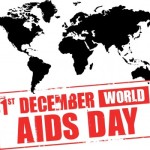Gross Visuals Aim To Scare Butt Suckers and Pre-Smokers

What would it take to make you stop smoking? Or to keep you from ever starting?
The Centers for Disease Control and Prevention (CDC) is hoping that a new 54 million dollar ad campaign, which begins today, will do just this.
This campaign is different than most “don’t do this, it’s bad for you” ads. It is designed to gross you out, make you cringe and/or shock viewers to quit smoking or never start in the first place.
The campaign, called “Tips From Former Smokers,” uses stories and graphic pictures of ex-smokers who have suffered the dire consequences of smoking addiction. One features a 50 year old man from Washington State who has to shave around the gaping hole in his neck through which he has to breathe.
Another shows a 31 year old putting on his prosthetic legs, the result of Buerger’s Disease that he’s had since age 18. Buerger’s Disease consists of inflammation and blood clots in the small arteries and veins of the hands and feet. This can lead to necrosis (dead tissue) and amputations. Buerger’s Disease is strongly associated with cigarette smoking, especially in young men ages 20-40 years old.
Department of Health and Human Services (DHHS) Secretary Kathleen Sebelius said in a statement:
Hundreds of thousands of lives are lost each year due to smoking, and for every person who dies, 20 more Americans live with an illness caused by smoking…
We cannot afford to continue watching the human and economic toll from tobacco rob our communities of parents and grandparents, aunts and uncles, friends and co-workers. We are committed to doing everything we can to help smokers quit and prevent young people from starting in the first place.
Shocking Facts About Smoking and Adolescents
 According the US Surgeon General, Vice Admiral Regina Benjamin:
According the US Surgeon General, Vice Admiral Regina Benjamin:
Today, more than 600,000 middle school students and 3 million high school students smoke cigarettes. Rates of decline for cigarette smoking have slowed in the last decade and rates of decline for smokeless tobacco use have stalled completely.
Every day, more than 1,200 people in this country die due to smoking. For each of those deaths, at least two youth or young adults become regular smokers each day. Almost 90% of those replacement smokers smoke their first cigarette by age 18.
There could be 3 million fewer young smokers today if success in reducing youth tobacco use that was made between 1997 and 2003 had been sustained.
Rates of smokeless tobacco use are no longer declining, and they appear to be increasing among some groups.
Cigars, especially cigarette-sized cigars, are popular with youth. One out of five high school males smokes cigars, and cigar use appears to be increasing among other groups.
Use of multiple tobacco products—including cigarettes, cigars, and smokeless tobacco—is common among young people.
Prevention efforts must focus on young adults ages 18 through 25, too. Almost no one starts smoking after age 25. Nearly 9 out of 10 smokers started smoking by age 18, and 99% started by age 26. Progression from occasional to daily smoking almost always occurs by age 26.
Do Disgusting Ads Really Work? Yeah, sort of.
There have certainly been some successful anti-smoking campaigns in the past:
Those that aired in the late 1960s helped drive a 10% decline in cigarette consumption from 1967 to 1970.
In the early 2000 the American Legacy Foundation launched it’s “truth®” ads. It was the largest national youth smoking prevention campaign not directed by the tobacco industry itself. truth® provided facts and information about tobacco products and the tobacco industry, and gives teens tools to enable them to take control and make informed decisions about tobacco use. They are credited with a large drop in youth smoking at the time.
But recent studies say that it’s not just the message, but how that message is presented that’s important.
Dr. Cornelia (Connie) Pechmann, a researcher at the University of CA Irvine, has extensively studied just this. In her 2006 article she says that “fear campaigns” can work well with adolescents, but they need to provoke more than fear- they need to provoke disgust!
Health appeals need not evoke fear, though; they may evoke disgust. Research indicates that associating smoking with disgust is perhaps the single most effective way to make smoking socially unacceptable and encourage antismoking activism. Disgust is what people feel in response to an immoral act, and it motivates action. Whereas fear is associated with a desire to escape or hide, disgust is associated with a desire to expel or obliterate.
Researchers also suggest tailoring ad campaigns to target teens with different motivational priorities.
Are you promotion- or prevention-oriented?
Most adolescents seem to belong to one of two groups: those who are promotion-oriented, and those who are prevention-oriented. The promotion oriented groups thinks in terms of “How will this benefit me and get me ahead?” while the prevention oriented group thinks “How can I protect myself from this?” Promotion focused teens respond best to positive messages, while prevention focused teens react more strongly to negative messages.
Advertisers need to take this into consideration when designing anti-smoking campaigns.
Considering the tobacco industry spends 10 billion dollars a year to promote their product, anti-smoking forces need all the help they can get.
Have you seen one of the new anti-smoking ads? What do you think? Do you think they will work?
We thank Dr. Connie Pechmann for sending us copies of her research articles.



























0 comments